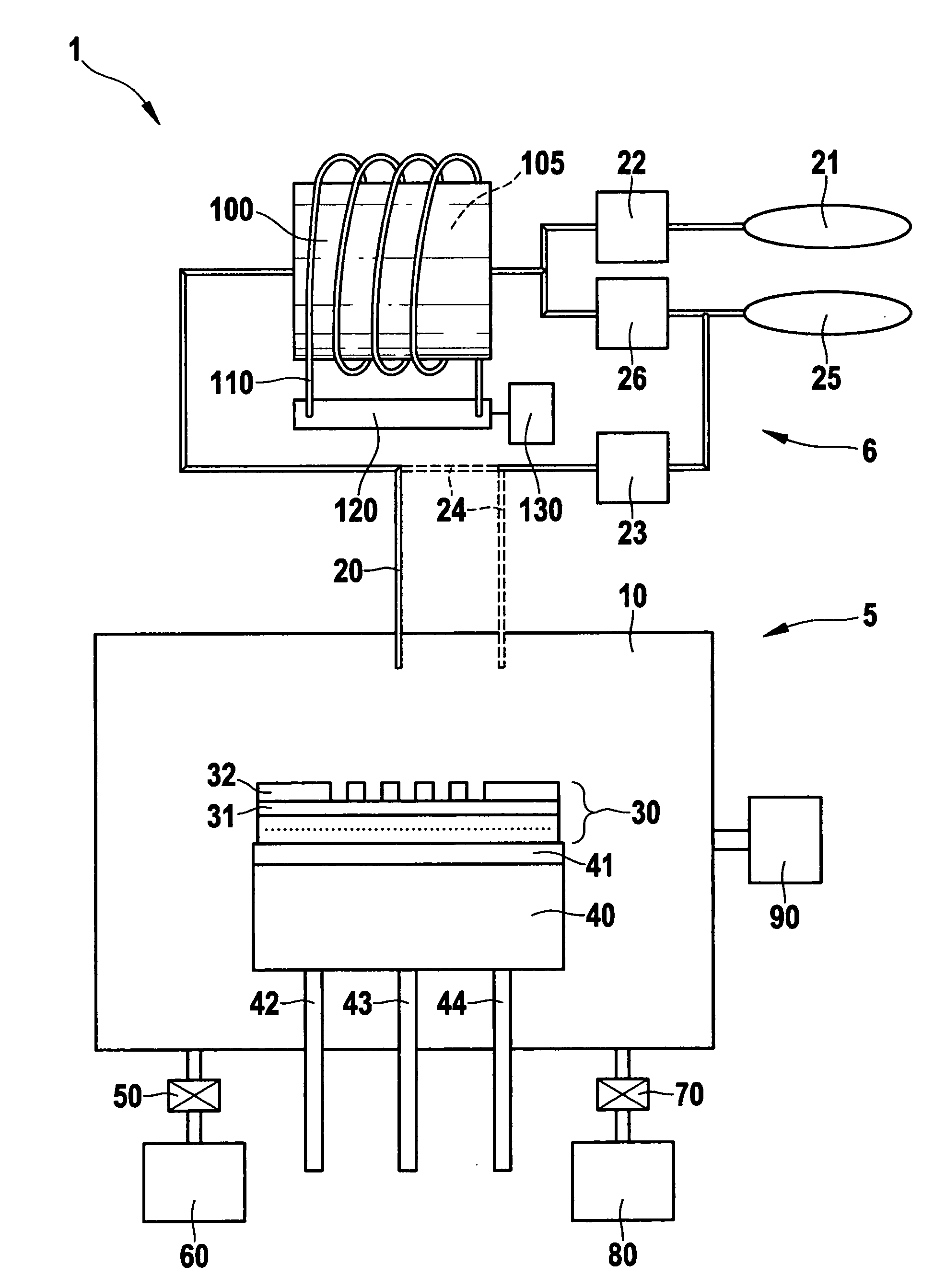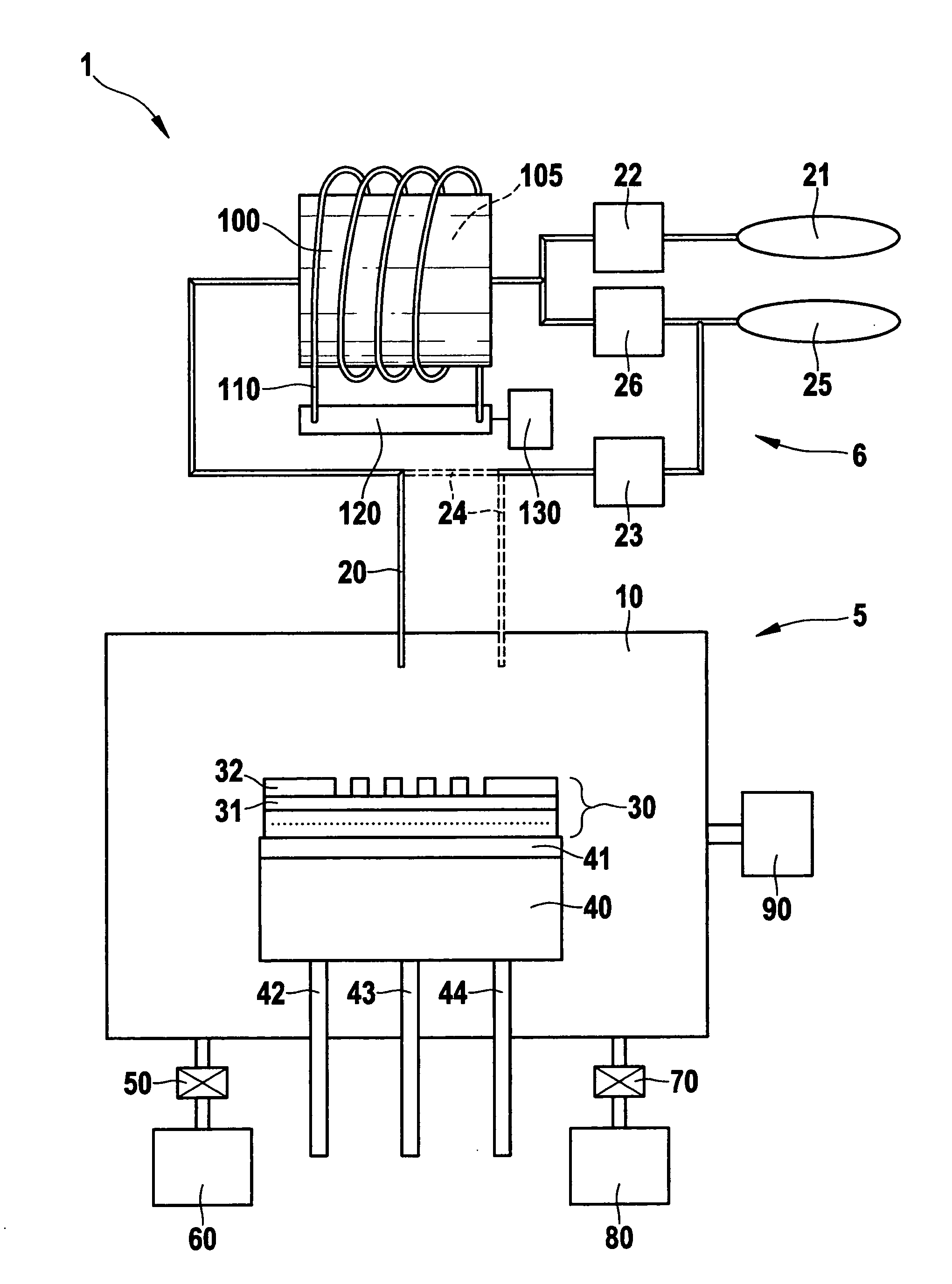Method for etching a layer on a silicon semiconductor substrate
- Summary
- Abstract
- Description
- Claims
- Application Information
AI Technical Summary
Benefits of technology
Problems solved by technology
Method used
Image
Examples
Embodiment Construction
[0017]The method according to the present invention is first elucidated as an example in connection with in-situ production of ClF3.
[0018]FIG. 1 shows a device 1 including an etching system 5, which has a process chamber 10 in which a semiconductor substrate 30, which may be a silicon wafer having a silicon-germanium mixed semiconductor layer 31, is etched. Etching system 5 is provided with a device 6 for generating chlorine trifluoride (ClF3). Systems associated with devices for generating chlorine trifluoride are disclosed in Patent Specification DE 102 29 037 A1 to which reference is hereby made. The system discussed in Patent Specification DE 102 29 037 A1 and provided with a device for generating chlorine trifluoride differs from the system disclosed according to the exemplary embodiments and / or exemplary methods of the present invention in that no arrangement is provided which would permit additionally adding gases selected from the group including Cl2 and / or HCl to the etchin...
PUM
| Property | Measurement | Unit |
|---|---|---|
| Pressure | aaaaa | aaaaa |
| Pressure | aaaaa | aaaaa |
| Pressure | aaaaa | aaaaa |
Abstract
Description
Claims
Application Information
 Login to View More
Login to View More - R&D
- Intellectual Property
- Life Sciences
- Materials
- Tech Scout
- Unparalleled Data Quality
- Higher Quality Content
- 60% Fewer Hallucinations
Browse by: Latest US Patents, China's latest patents, Technical Efficacy Thesaurus, Application Domain, Technology Topic, Popular Technical Reports.
© 2025 PatSnap. All rights reserved.Legal|Privacy policy|Modern Slavery Act Transparency Statement|Sitemap|About US| Contact US: help@patsnap.com


